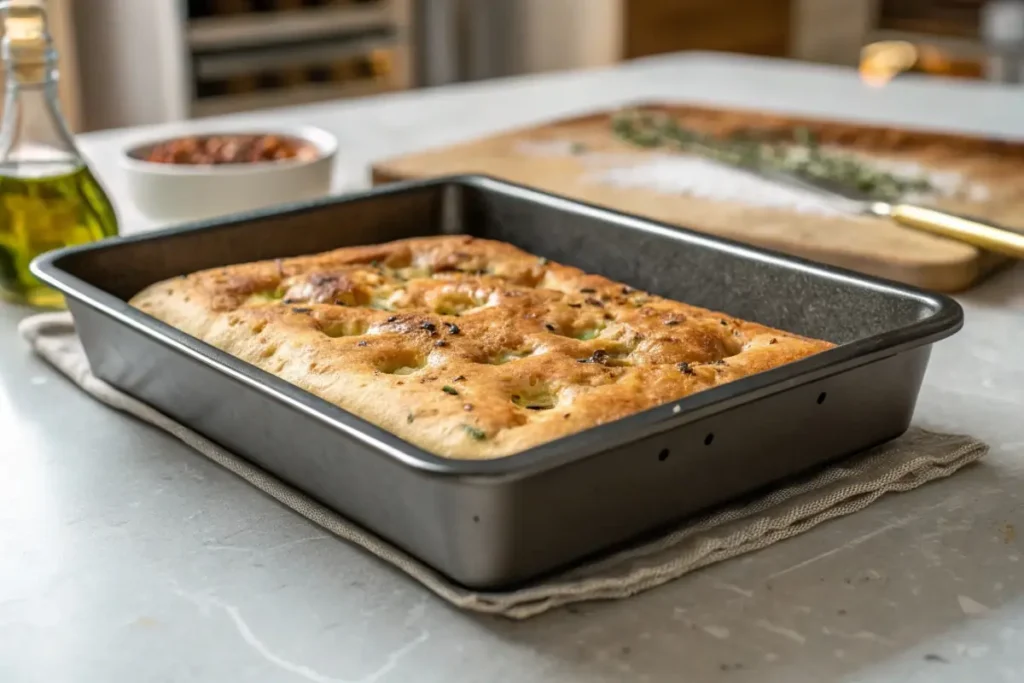Focaccia is easier to bake than you think. Using the right focaccia pan ensures success. Let’s explore the best options!
What to Look for in a Focaccia Pan
Choosing the perfect focaccia pan matters. Different materials and sizes affect your bake. Therefore, consider these factors.
Size and Shape
Focaccia can be made in various sizes. The choice depends on your needs.
- Sheet Pans: Perfect for large batches. Ideal for parties.
- Square Pans: Great for even baking. Easy to cut into squares.
- Round Pans: Offer a unique presentation. Good for smaller servings.
Choose a size that matches your baking style. Consider how many people you’re serving. Smaller pans are great for individual servings.
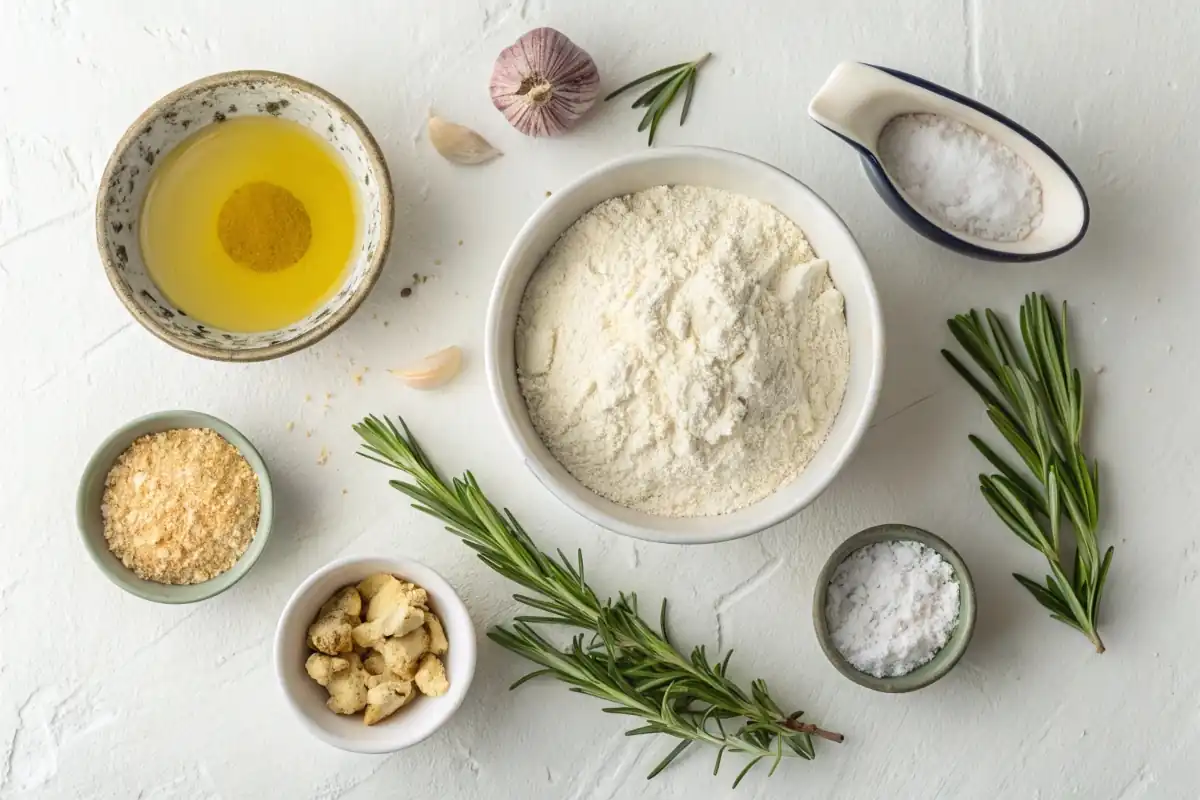
Classic Rosemary Focaccia: A Recipe for the Perfect Bake
This recipe utilizes the principles outlined in the previous article, helping you create a delicious focaccia with the perfect pan.
Yields: 12 servings
Prep time: 30 minutes (plus rising time)
Cook time: 20-25 minutes
Ingredients:
- 4 cups (500g) bread flour, plus more for dusting. Bread flour’s higher protein gives focaccia its signature chew.
- 2 teaspoons (7g) instant dry yeast. Ensures a good rise.
- 2 teaspoons (12g) sea salt, plus extra for sprinkling. Sea salt enhances the flavor.
- 2 tablespoons olive oil, plus ½ cup for drizzling. Olive oil is essential for flavor and texture.
- 1 ½ cups (360ml) lukewarm water (about 105-115°F). Activates the yeast.
- 2 tablespoons fresh rosemary leaves, chopped, plus extra sprigs for topping. Rosemary provides a classic aroma.
- Flaky sea salt, for finishing. Adds a satisfying crunch.
Equipment:
- Focaccia pan (13×9 inch aluminum baking sheet or cast iron skillet recommended)
- Large mixing bowl or stand mixer
- Measuring cups and spoons
- Plastic wrap
- Clean kitchen towel
- Wire cooling rack
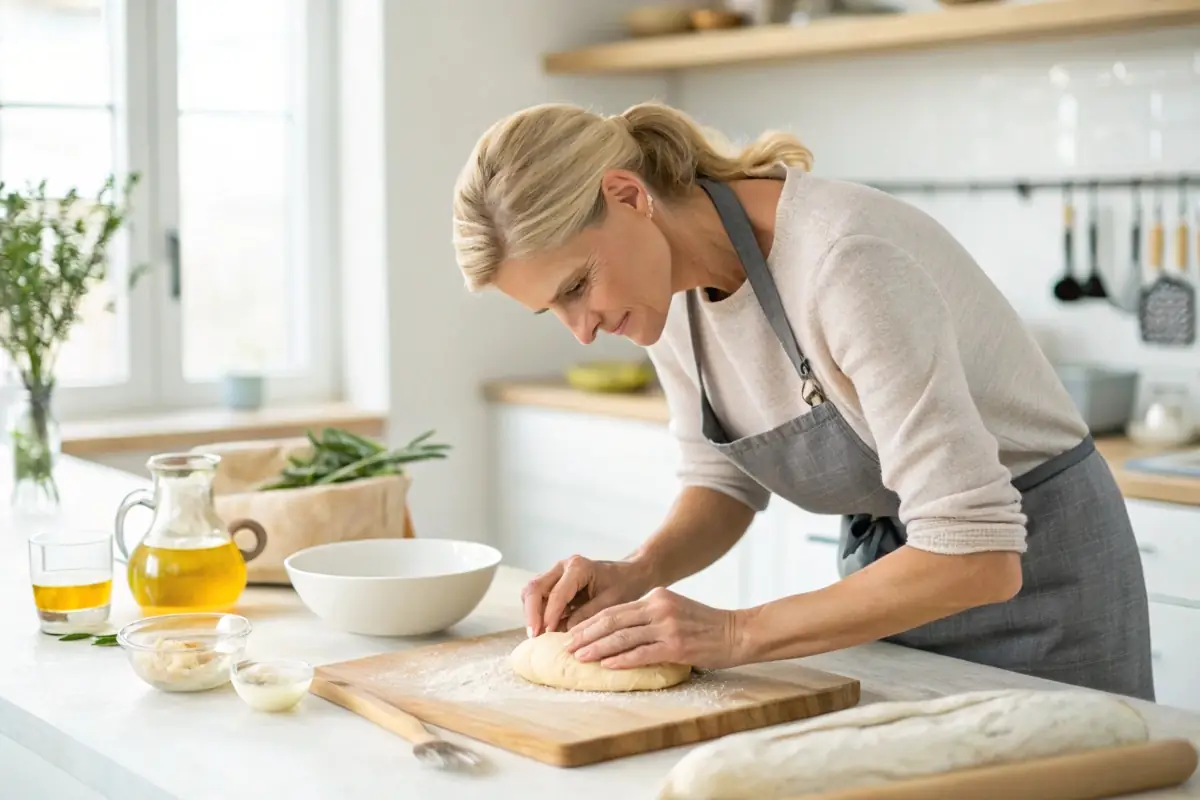
Instructions
- Combine Dry Ingredients:
In a large mixing bowl (or the bowl of your stand mixer), combine the bread flour, instant dry yeast, and sea salt. Whisk to ensure everything is evenly distributed. This step ensures the yeast is well-mixed with the flour. - Add Wet Ingredients:
Make a well in the center of the dry ingredients. Pour in the lukewarm water and 2 tablespoons of olive oil. - Mix the Dough:
If using a stand mixer: Use the dough hook attachment and mix on low speed until the dough comes together. Increase the speed to medium-low and knead for 8-10 minutes, until the dough is smooth and elastic.
If mixing by hand: Use a wooden spoon or your hands to combine the ingredients until a shaggy dough forms. Turn the dough out onto a lightly floured surface and knead for 10-12 minutes, until smooth and elastic. - First Rise:
Lightly oil a large bowl with olive oil. Place the dough in the bowl, turning to coat. Cover the bowl with plastic wrap or a clean kitchen towel. Let the dough rise in a warm place for 1-1.5 hours, or until doubled in size. This allows the yeast to develop the dough’s structure and flavor. - Prepare the Pan:
Generously drizzle ½ cup olive oil into your chosen focaccia pan (aluminum baking sheet or cast iron skillet are excellent choices). Ensure the entire bottom of the pan is coated. The olive oil prevents sticking and contributes to a crispy crust. - Transfer and Stretch the Dough:
Gently deflate the dough and transfer it to the prepared pan. Use your fingers to gently stretch the dough to fill the pan as evenly as possible. Don’t worry if it doesn’t reach the corners; it will spread during the second rise. - Second Rise/Proof:
Cover the pan with plastic wrap or a clean kitchen towel. Let the dough rise again in a warm place for 30-45 minutes. - Dimple the Dough:
Preheat your oven to 425°F (220°C).
Uncover the dough. Use your fingers to press deep dimples all over the surface of the dough. These dimples are characteristic of focaccia. - Add Toppings:
Sprinkle the chopped fresh rosemary evenly over the dimpled dough. Add a few rosemary sprigs. Sprinkle generously with flaky sea salt. - Bake:
Bake in the preheated oven for 20-25 minutes, or until the focaccia is golden brown and the bottom is crispy. The baking time may vary depending on your oven and pan. - Cool:
Remove the focaccia from the oven and let it cool in the pan for 5-10 minutes. Then, carefully transfer it to a wire cooling rack to cool slightly before slicing and serving. This prevents the bottom from becoming soggy.
Tips for Success:
- Water Temperature: Ensure the water is lukewarm, not hot, to avoid killing the yeast.
- Kneading: Proper kneading is essential for a good texture. Don’t skimp on this step.
- Rising Time: Adjust rising times based on the warmth of your environment.
- Olive Oil: Don’t be afraid to use a generous amount of olive oil. It is key to the flavor and texture of focaccia.
- Toppings: Feel free to experiment with different toppings! Tomatoes, olives, garlic, and other herbs are great additions.
- Pan Choice: As discussed, the focaccia pan you choose impacts the final result. A baking sheet will yield a thinner focaccia, while a cast iron skillet creates a crispier bottom.
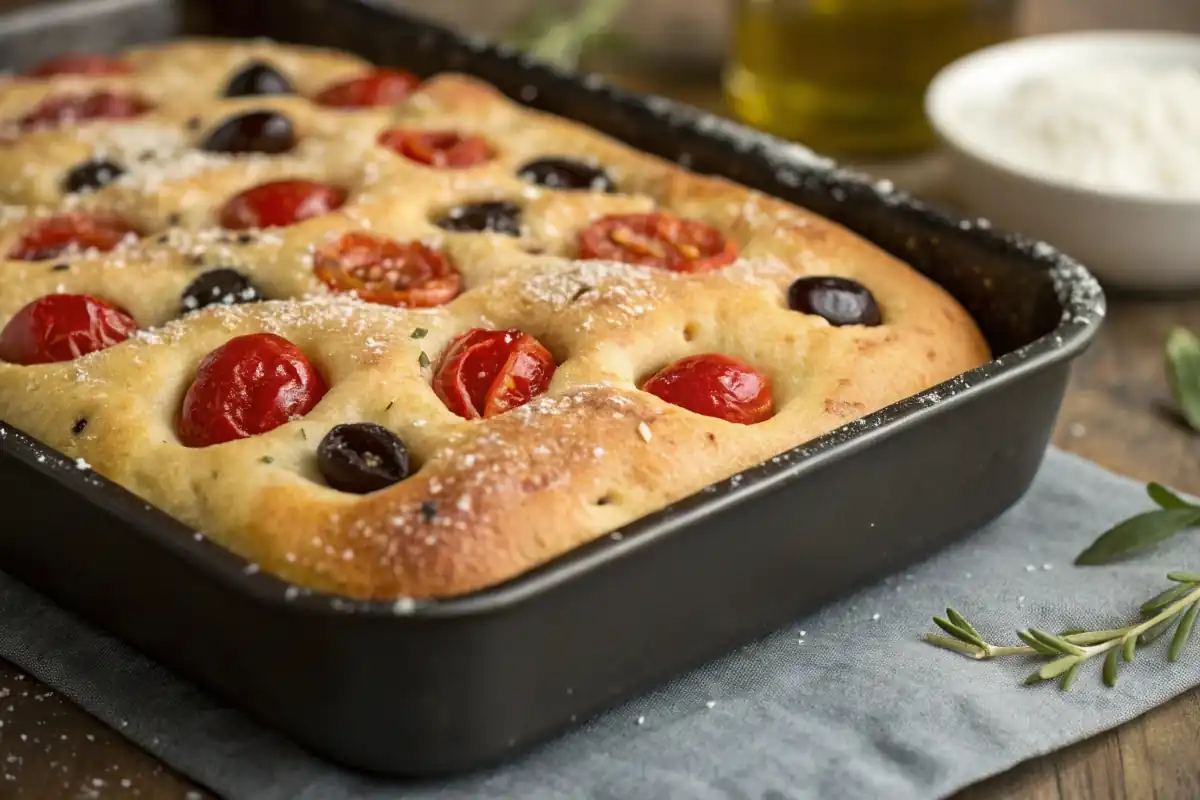
Focaccia Recipes to Try
Here are some focaccia recipe ideas. These can help you get started. Be creative. Explore different flavor combinations.
Classic Rosemary Focaccia
Rosemary is a classic flavor. It compliments focaccia perfectly. This is a simple, delicious option. The herb adds aroma. It enhances the taste. This recipe is always a crowd-pleaser.
Tomato and Olive Focaccia
Tomatoes and olives add flavor and color. This focaccia is both satisfying and beautiful. Vegetables add moisture. They offer great flavor. This is a Mediterranean-inspired focaccia.
Garlic and Herb Focaccia
Garlic and herbs create an aromatic focaccia. Use a mix of your favorite herbs. Garlic adds depth. It makes the focaccia flavorful.
Focaccia with Sea Salt
Sea salt is an easy enhancement. It brings out the focaccia’s natural flavor. Salt is essential. It balances the flavors. Coarse sea salt adds texture and flavor.
Caramelized Onion Focaccia
Caramelized onion adds sweetness. It is a flavorful addition. This focaccia is rich. This focaccia is savory and sweet.
- Caramelize the onions slowly.
- Add them to the dough.
Potato Focaccia
Potato makes the focaccia pan soft. It adds moisture. This variation is unique. Potato focaccia is a regional specialty in Italy.
Pesto Focaccia
Pesto adds an herbaceous flavor. Use fresh pesto for the best taste. This focaccia pan is vibrant. It’s a bright and flavorful option.
Mushroom Focaccia
Mushrooms add an earthy flavor. Sauté them before adding them to the dough. This focaccia is savory and delicious.
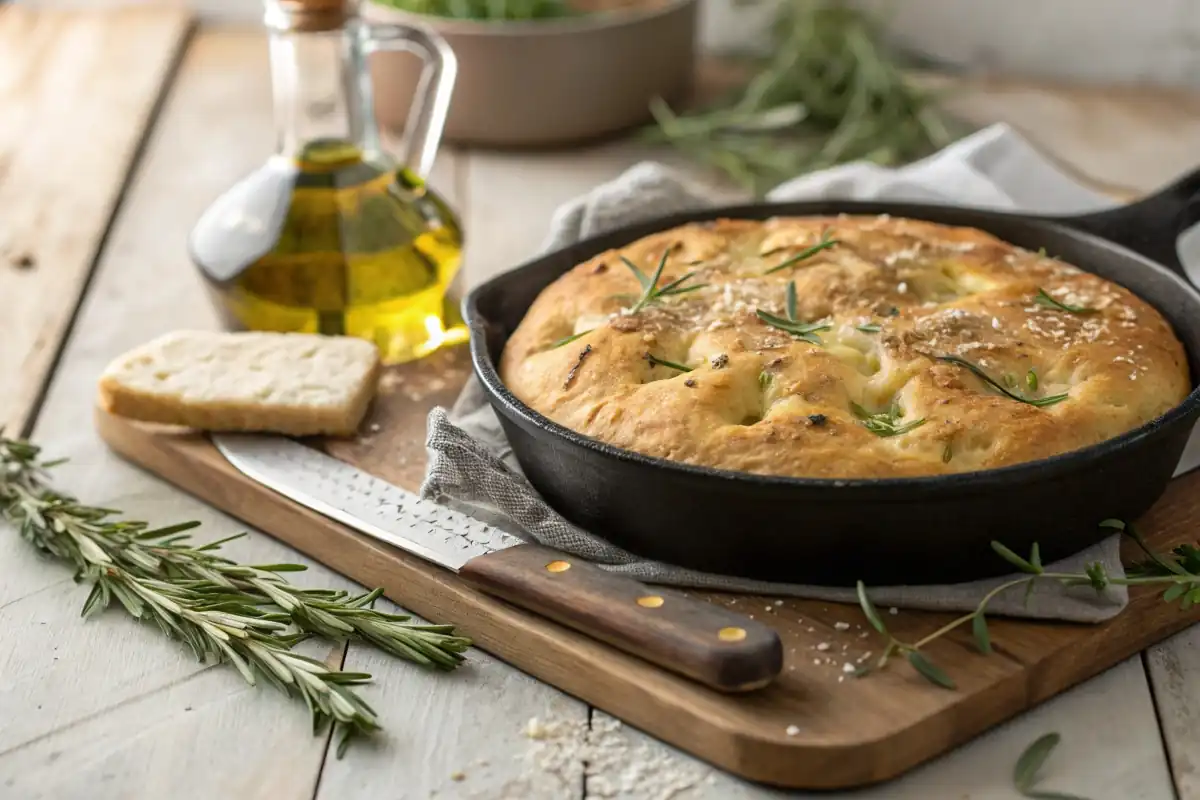
Storing focaccia pan
Proper storage keeps focaccia fresh. Follow these tips for the best results. Prevent it from drying out. This will extend its shelf life.
Room Temperature
Store focaccia at room temperature. Use an airtight container. It stays fresh for up to two days. Proper storage maintains freshness. Keep it away from direct sunlight.
Freezing
Freezing is a good option for longer storage. Wrap the focaccia tightly. It stays good for up to two months. Freezing preserves flavor. Thaw it completely before reheating.
- Slice before freezing.
- Thaw at room temperature.
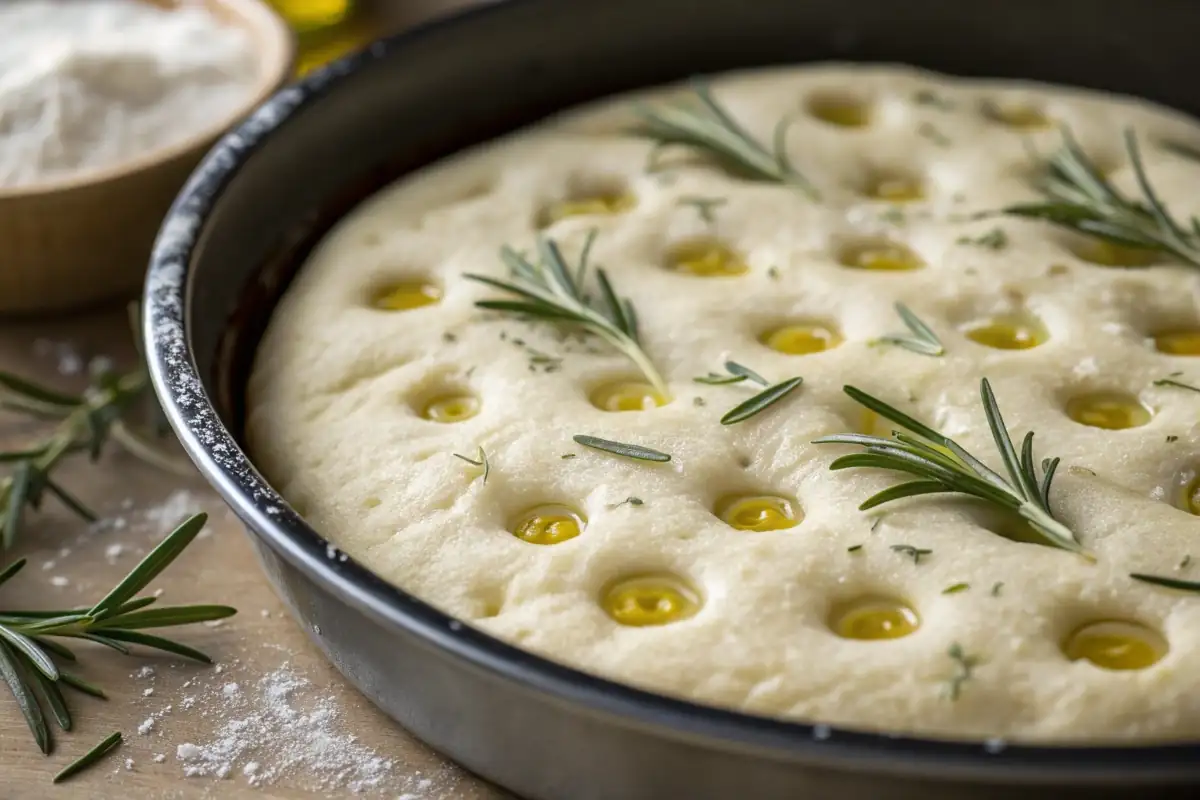
Reheating
Reheat focaccia to restore its texture. This makes it taste fresh. Reheating brings back the warmth. Warm it gently to avoid drying it out.
- Use an oven or toaster oven.
- Heat until warm.
Cleaning Your Focaccia Pan
Cleaning your focaccia pan properly extends its life. Follow these guidelines for each type of pan. Proper cleaning extends the pan’s life. This ensures it stays in good condition.
Aluminum
- Wash with soap and water.
- Avoid abrasive cleaners.
Non-Stick
- Use a soft sponge.
- Avoid metal utensils.
Cast Iron
- Season after each use.
- Avoid soap unless necessary.
Glass
- Wash with soap and water.
- Avoid sudden temperature changes.
Maintaining Non-Stick Coating
Proper care extends the life of the coating. Avoid using metal utensils. This prevents scratches. Handwashing is recommended for non-stick pans.
Removing Stubborn Residue
Soak the pan in warm, soapy water. Use a non-abrasive sponge. This removes tough residue.
Focaccia Pan Alternatives
Don’t have a focaccia pan? There are alternatives you can use. These options work in a pinch. They allow you to still bake focaccia.
Pizza Stone
A pizza stone works well. It gives a crispy crust. It’s great for baking focaccia. A pizza stone retains heat well.
Sheet Pan
A sheet pan is a versatile option. It works for focaccia. It is also easy to clean. It is a good all-purpose baking pan.
Skillet
A skillet is useful. It retains heat. This creates a crispy focaccia. A cast iron skillet works especially well.
Baking on a Tray
A baking tray can be a backup option. Make sure you grease it well. This will prevent sticking. Use a baking tray with edges to prevent spills.
Troubleshooting Common focaccia pan Problems
Here are solutions to common focaccia baking problems. Solve these issues easily. These tips will help you improve your focaccia baking skills.
Soggy Bottom
A soggy bottom can be avoided. Use a perforated pan. Ensure the oven is hot enough. Preheat the oven thoroughly.
Dry Focaccia
A dry focaccia results from overbaking. Reduce the baking time. Add more olive oil. Check the focaccia frequently.
Uneven Browning
Uneven browning happens with poor heat distribution. Rotate the pan. Use an oven thermometer. Ensure your oven heats evenly.
Dough Sticking
Dough sticking is frustrating. Grease the pan well. Use parchment paper. Let the dough rise properly.
Why Invest in a Good Focaccia Pan?
Investing in a good focaccia pan is worthwhile. It improves your baking experience. It ensures consistent results. A quality pan makes baking easier. It allows you to create delicious focaccia every time.
- Even baking.
- Easy cleanup.
- Durable performance.
Healthier Focaccia Options
Explore healthier focaccia variations. These are better for you. These alternatives are great for health-conscious eaters.
Whole Wheat Focaccia
Use whole wheat flour. This increases fiber. It adds nutrients. Whole wheat adds a nutty flavor.
Lower Sodium Focaccia
Reduce the salt content. This makes it heart-healthy. You can control the salt. Use herbs and spices for flavor.
Vegetable-Rich focaccia pan
Load up on vegetables. This boosts vitamin intake. Add colorful vegetables.
Focaccia as an Appetizer
Focaccia makes a great appetizer. Serve it with dips and spreads. It is perfect for parties.
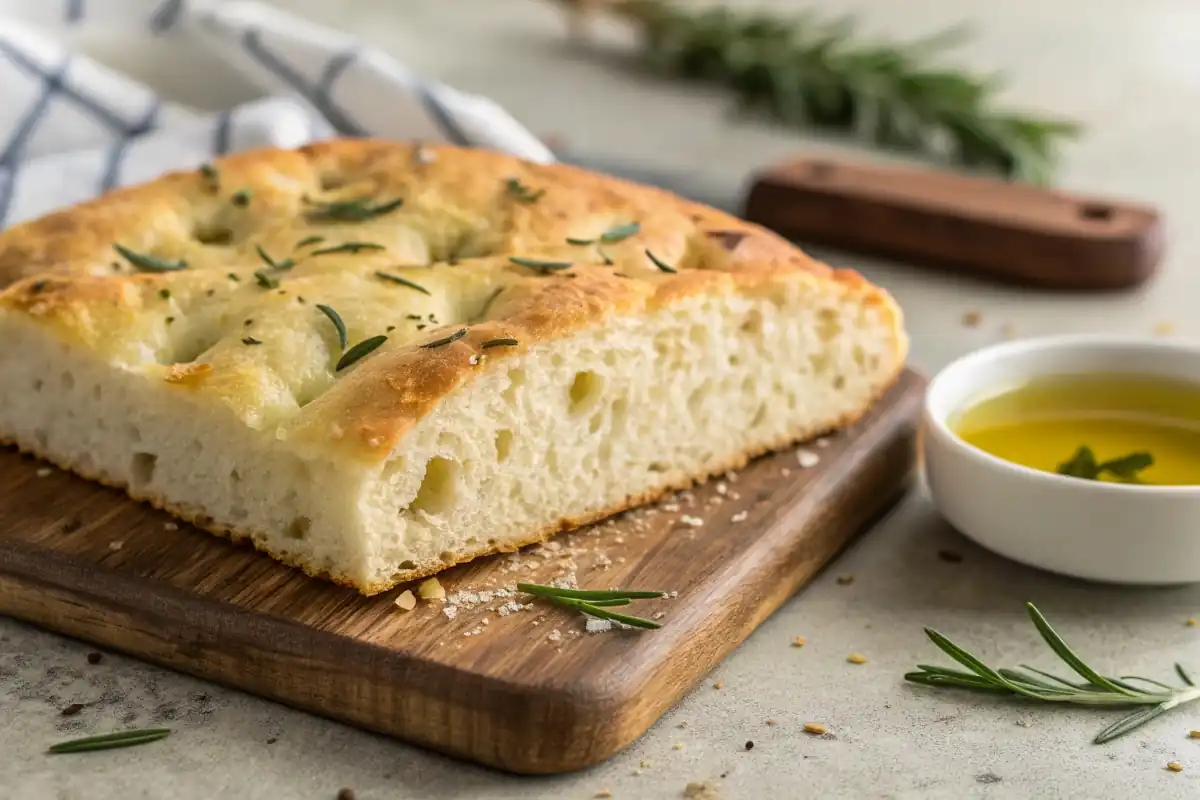
Different Focaccia Styles Around the World
Focaccia has many regional variations. Explore these culinary traditions. Discover new flavors and techniques.
Serving Suggestions for focaccia pan
- Serve with olive oil and balsamic.
- Use it for sandwiches.
- Pair it with soup or salad.
Summary
Choosing the right focaccia pan makes a big difference. Consider material, size, and durability. With the right pan, you’ll bake perfect focaccia every time. A good focaccia pan leads to great results. Happy Baking!
Frequently Asked Questions (FAQs)
When do I put the toppings on the focaccia bread?
Add toppings before baking. Press them gently into the dough. This helps them adhere.
Can I make focaccia without putting it on overnight rise?
Yes, you can. A shorter rise time works. Aim for at least 2-3 hours.
How to serve focaccia bread?
Serve focaccia warm. Slice it into squares. Enjoy it as a snack or side dish. It is also great for sandwiches.
How can I make focaccia in different variations?
Experiment with toppings. Try different herbs, vegetables, and cheeses. You can also add olives or sunflower seeds.

